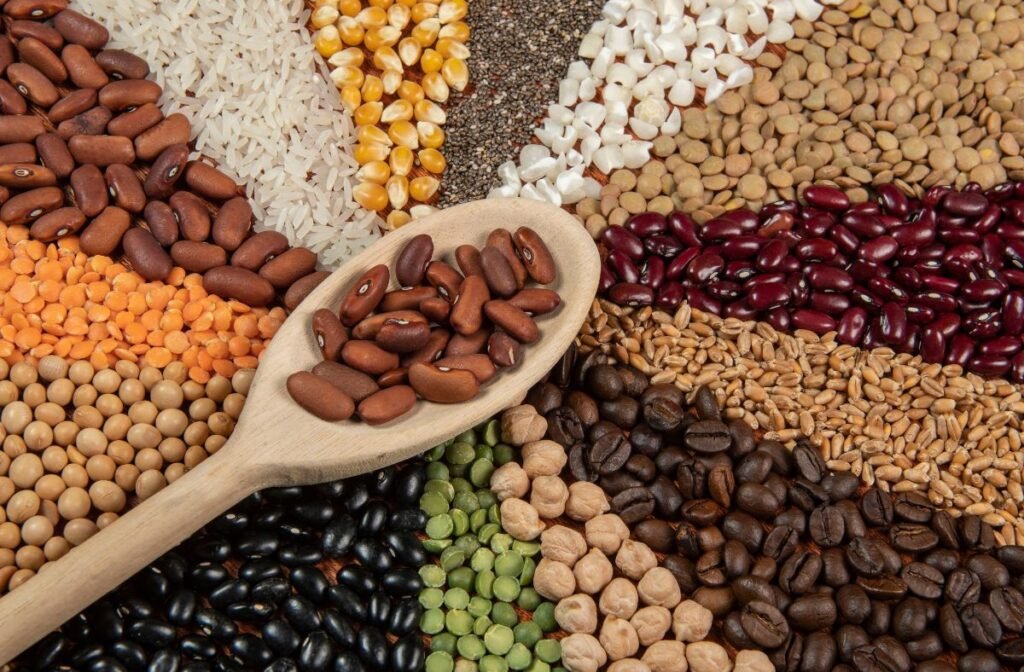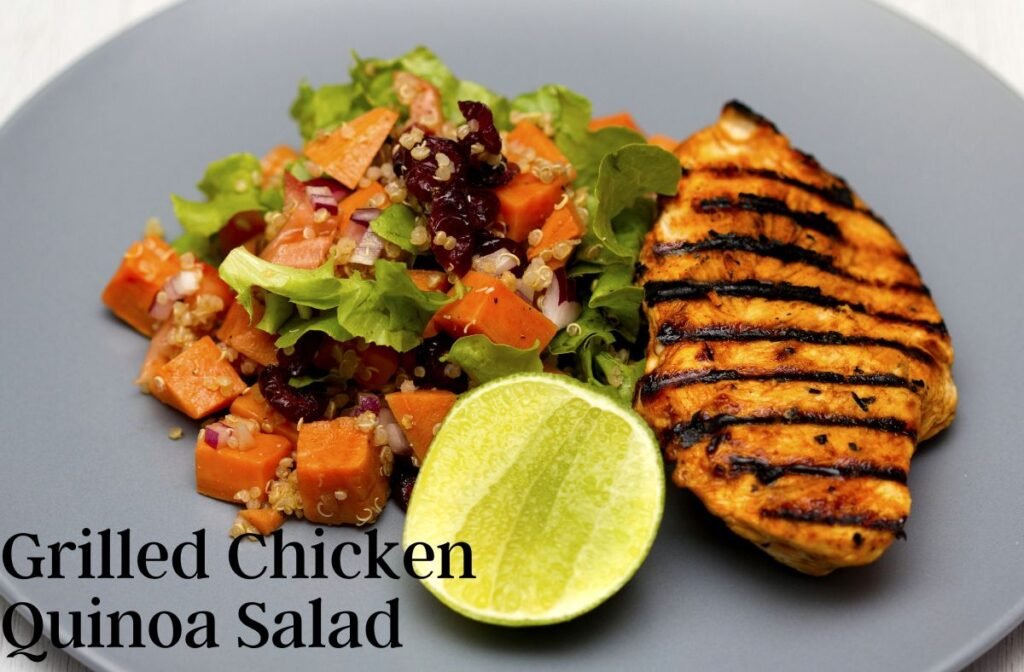In the quest for better health and well-being, understanding what do healthy meals include is a fundamental step. Healthy eating isn’t just about cutting calories or following the latest diet trend—it’s about nourishing your body with the right mix of nutrients to support your overall health, energy levels, and longevity.
Whether you’re a dedicated health enthusiast or taking your first steps toward better eating habits, this guide will outline the key elements of a nutritious meal, providing tips and insights to empower you to make smarter food choices.
The Building Blocks of a Healthy Meal
When pondering what do healthy meals include, it’s essential to recognize that balance and variety are key. A well-rounded meal typically incorporates a mix of macronutrients (carbohydrates, proteins, and fats) and micronutrients (vitamins and minerals) to ensure your body gets everything it needs to function optimally.
1. Lean Proteins
Proteins are the building blocks of your body, essential for muscle repair, immune function, and the production of enzymes and hormones. Including lean proteins in your meals helps maintain muscle mass and keeps you feeling full longer.
Sources of Lean Proteins:
- Poultry: Chicken breast, turkey
- Fish and Seafood: Salmon, tuna, shrimp
- Plant-Based Proteins: Lentils, chickpeas, tofu, tempeh
- Eggs: A versatile and nutrient-dense option

2. Whole Grains
Whole grains provide sustained energy and are rich in fiber, which aids in digestion and helps maintain a healthy weight. Unlike refined grains, whole grains retain their bran and germ, offering more nutrients and fiber.
Examples of Whole Grains:
- Brown Rice
- Quinoa
- Oats
- Whole Wheat Bread and Pasta
- Barley
3. Fruits and Vegetables
Fruits and vegetables are packed with essential vitamins, minerals, antioxidants, and fiber. They support immune function, reduce the risk of chronic diseases, and promote overall health.
Colorful Choices:
- Leafy Greens: Spinach, kale, Swiss chard
- Cruciferous Vegetables: Broccoli, cauliflower, Brussels sprouts
- Berries: Blueberries, strawberries, raspberries
- Citrus Fruits: Oranges, grapefruits, lemons
- Root Vegetables: Carrots, sweet potatoes, beets
4. Healthy Fats
Contrary to popular belief, not all fats are bad. Healthy fats are crucial for brain health, hormone production, and the absorption of fat-soluble vitamins (A, D, E, K).
Good Sources of Healthy Fats:
- Avocados
- Nuts and Seeds: Almonds, chia seeds, flaxseeds
- Olive Oil and Other Plant Oils
- Fatty Fish: Salmon, mackerel, sardines
5. Hydration
Staying hydrated is often overlooked but is vital for maintaining bodily functions, regulating temperature, and supporting digestion. Water is the best choice, but herbal teas and infused waters are also excellent options.
Balancing Macronutrients for Optimal Health
A healthy meal isn’t just about including the right types of food but also about balancing macronutrients to meet your body’s needs.
Carbohydrates: Fuel for Your Body
Carbohydrates are your body’s primary source of energy. Opt for complex carbohydrates, which provide a steady release of energy, rather than simple sugars that can cause energy spikes and crashes.
Complex Carbohydrates Include:
- Whole Grains: Brown rice, quinoa
- Legumes: Beans, lentils
- Vegetables: Sweet potatoes, squash
Proteins: Building and Repairing
Proteins are essential for muscle repair, enzyme function, and immune health. Aim to include a source of lean protein in every meal to support these functions.
Fats: Essential for Function
Healthy fats support brain function, hormone production, and cell structure. Including sources of unsaturated fats in your meals can help improve cholesterol levels and reduce inflammation.
Micronutrients: The Hidden Heroes
While macronutrients provide energy and support bodily functions, micronutrients—vitamins and minerals—are crucial for maintaining overall health. They play roles in immune function, bone health, fluid balance, and more.

Key Vitamins and Minerals:
- Vitamin C: Boosts immune system and aids in collagen production (found in citrus fruits, strawberries, bell peppers)
- Vitamin D: Supports bone health and immune function (sourced from sunlight, fortified foods, fatty fish)
- Calcium: Essential for strong bones and teeth (dairy products, leafy greens, fortified plant milks)
- Iron: Crucial for blood health and energy (red meat, beans, spinach)
- Fiber: Aids in digestion and helps maintain a healthy weight (whole grains, fruits, vegetables)
Portion Control: Eating the Right Amount
Understanding portion sizes is as important as choosing the right foods. Overeating, even healthy foods, can lead to weight gain and other health issues.
Tips for Portion Control:
- Use Smaller Plates: Helps prevent overeating by making portions appear larger.
- Listen to Your Hunger Cues: Eat when you’re hungry and stop when you’re satisfied.
- Pre-Portion Snacks: Instead of eating directly from the package, portion out snacks to avoid mindless eating.
Meal Composition: Building a Balanced Plate
Creating a balanced plate ensures you’re getting a variety of nutrients in each meal. Here’s a simple guide to constructing a healthy meal:
The Plate Method:
| Component | Portion | Examples |
|---|---|---|
| Half the Plate | Fruits and Vegetables | Spinach salad, steamed broccoli, berries |
| One Quarter | Lean Protein | Grilled chicken, tofu stir-fry, salmon |
| One Quarter | Whole Grains or Starchy Vegetables | Brown rice, quinoa, sweet potatoes |
| Healthy Fats | Small serving of healthy fats | Avocado slices, a drizzle of olive oil |
| Hydration | Adequate fluids (water, herbal tea) | A glass of water with lemon, green tea |
Special Dietary Needs: Tailoring Healthy Meals
Healthy eating isn’t one-size-fits-all. Whether you have dietary restrictions, allergies, or specific health goals, it’s important to tailor your meals accordingly.
Common Dietary Needs:
- Vegetarian/Vegan: Focus on plant-based proteins, whole grains, and a variety of vegetables and fruits.
- Gluten-Free: Choose gluten-free grains like quinoa, rice, and gluten-free oats.
- Low-Carb/Keto: Emphasize proteins, healthy fats, and non-starchy vegetables while minimizing carbohydrate intake.
- Dairy-Free: Opt for plant-based milk alternatives and incorporate calcium-rich foods like leafy greens and fortified products.
Sample Recipes: What Do Healthy Meals Include?
To put theory into practice, here are a couple of delicious and balanced meal ideas that answer the question what do healthy meals include.

Grilled Chicken Quinoa Salad
Ingredients:
- 1 cup cooked quinoa
- 1 grilled chicken breast, sliced
- 1 cup cherry tomatoes, halved
- 1 cucumber, diced
- 1 avocado, sliced
- 2 tablespoons olive oil
- Juice of 1 lemon
- Salt and pepper to taste
- Fresh parsley, chopped
Instructions:
- In a large bowl, combine quinoa, cherry tomatoes, cucumber, and parsley.
- Drizzle with olive oil and lemon juice, then toss to combine.
- Top with sliced grilled chicken and avocado.
- Season with salt and pepper to taste.
- Serve immediately or chill for an hour for enhanced flavors.
Veggie-Packed Stir-Fry
Ingredients:
- 1 block firm tofu, cubed
- 2 tablespoons soy sauce (or tamari for gluten-free)
- 1 tablespoon sesame oil
- 1 red bell pepper, sliced
- 1 broccoli head, cut into florets
- 1 carrot, julienned
- 2 cloves garlic, minced
- 1 tablespoon grated ginger
- 2 tablespoons hoisin sauce
- 1 cup cooked brown rice
- Sesame seeds for garnish
Instructions:
- Marinate tofu cubes in soy sauce for at least 15 minutes.
- Heat sesame oil in a large skillet over medium heat. Add tofu and cook until golden brown. Remove and set aside.
- In the same skillet, add garlic and ginger, sautéing until fragrant.
- Add bell pepper, broccoli, and carrot, stir-frying until vegetables are tender-crisp.
- Return tofu to the skillet and add hoisin sauce, stirring to coat everything evenly.
- Serve over cooked brown rice and garnish with sesame seeds.
The Role of Hydration in Healthy Meals
While not a food, hydration is a crucial component of a healthy diet. Proper hydration supports digestion, nutrient absorption, and overall bodily functions. Aim to drink at least eight glasses of water a day, and include hydrating foods like cucumbers, watermelon, and oranges in your meals.
The Importance of Fiber: What Do Healthy Meals Include
Fiber is a vital part of a healthy diet, promoting digestive health, regulating blood sugar levels, and keeping you feeling full longer.
High-Fiber Foods to Include:
- Whole Grains: Brown rice, barley, oats
- Legumes: Lentils, black beans, chickpeas
- Fruits: Apples, pears, berries
- Vegetables: Broccoli, carrots, leafy greens
- Nuts and Seeds: Almonds, chia seeds, flaxseeds
Personalizing Your Healthy Meals
Everyone’s nutritional needs and preferences are different. Here are some tips to personalize what do healthy meals include to fit your lifestyle:
Listen to Your Body
Pay attention to how different foods make you feel. Incorporate more of the foods that give you energy and vitality, and reduce those that make you feel sluggish or uncomfortable.
Experiment with Flavors
Healthy eating doesn’t have to be bland. Experiment with herbs, spices, and different cooking methods to keep your meals exciting and flavorful.
Plan According to Your Schedule
If you have a busy lifestyle, focus on quick and easy healthy meals like salads, smoothies, and stir-fries. Meal prepping on weekends can also save time during the week.
Incorporate Seasonal Foods
Seasonal fruits and vegetables are often fresher, more flavorful, and more nutritious. They can also be more affordable and support local agriculture.
Tips for Maintaining a Balanced Diet
Maintaining a balanced diet requires consistent effort and mindful eating. Here are some strategies to help you stay on track:
Meal Planning
Plan your meals for the week ahead to ensure you include a variety of nutrients and avoid last-minute unhealthy choices.
Smart Grocery Shopping
Stick to your grocery list, focusing on whole, unprocessed foods. Avoid shopping when hungry to reduce the temptation of buying junk food.
Mindful Eating
Eat slowly and savor each bite. This practice helps you recognize when you’re full and prevents overeating.
Regular Eating Schedule
Maintaining a regular eating schedule helps regulate your metabolism and prevents extreme hunger that can lead to unhealthy food choices.
Overcoming Common Barriers to Healthy Eating
Despite the benefits, many people struggle with maintaining a healthy diet. Here are common obstacles and how to overcome them:
Lack of Time
Solution: Opt for quick and easy recipes, meal prep in advance, and use kitchen gadgets like slow cookers or Instant Pots to save time.
High Cost of Healthy Foods
Solution: Buy in bulk, choose seasonal produce, and prioritize affordable staples like beans, lentils, and whole grains. Cooking at home can also reduce costs compared to eating out.
Cravings for Unhealthy Foods
Solution: Find healthier alternatives that satisfy your cravings, such as dark chocolate instead of milk chocolate or homemade baked chips instead of fried ones.
Limited Cooking Skills
Solution: Start with simple recipes and gradually build your cooking skills. Online tutorials, cooking classes, and recipe books can be valuable resources.
Frequently Asked Questions (FAQs)
1. What defines a healthy meal?
A healthy meal includes a balance of lean proteins, whole grains, fruits and vegetables, healthy fats, and adequate hydration. It should provide essential nutrients without excessive calories, sugars, or unhealthy fats.
2. How often should I include fruits and vegetables in my meals?
Aim to include fruits and vegetables in every meal. Nutritionists recommend at least five servings of fruits and vegetables each day to ensure a variety of vitamins, minerals, and fiber.
3. Can I eat healthy on a budget?
Yes! Focus on affordable, nutrient-dense foods like beans, lentils, whole grains, seasonal produce, and buy in bulk when possible. Planning and cooking at home can also help keep costs down.
4. Is it necessary to count calories for a healthy diet?
Counting calories isn’t necessary for everyone, but being mindful of portion sizes and the nutritional quality of your food can help you maintain a balanced diet without the stress of tracking every calorie.
5. How can I make healthy eating a habit?
Start by making small, sustainable changes. Incorporate more vegetables into your meals, choose whole grains over refined ones, and gradually reduce processed foods. Consistency is key to forming lasting habits.
6. What are some healthy snack options?
Healthy snacks include fruits, vegetables with hummus, nuts and seeds, yogurt, whole-grain crackers with cheese, and homemade energy bars.
7. Can healthy meals help with weight loss?
Yes, healthy meals that are balanced and portion-controlled can aid in weight loss by providing essential nutrients while keeping calorie intake in check.
8. How do I ensure I’m getting enough protein on a vegetarian or vegan diet?
Include a variety of plant-based proteins such as lentils, chickpeas, tofu, tempeh, quinoa, and nuts. Combining different protein sources throughout the day can ensure you get all essential amino acids.
9. What role do carbohydrates play in a healthy diet?
Carbohydrates are the body’s primary energy source. Choosing complex carbohydrates like whole grains, fruits, and vegetables provides sustained energy and important nutrients.
10. Is it okay to have occasional treats while eating healthy?
Absolutely! Moderation is key. Allowing yourself occasional treats can prevent feelings of deprivation and help maintain a balanced, sustainable diet.
Conclusion
Understanding what do healthy meals include is a powerful tool in your journey towards better health and well-being. By incorporating a variety of lean proteins, whole grains, fruits, vegetables, and healthy fats into your diet, you provide your body with the essential nutrients it needs to thrive. Remember, healthy eating is not about perfection but about making consistent, informed choices that align with your personal health goals. Embrace the diversity of nutritious foods, experiment with new recipes, and enjoy the process of nourishing your body with wholesome, delicious meals.

